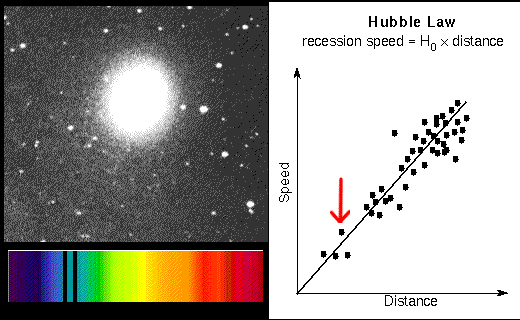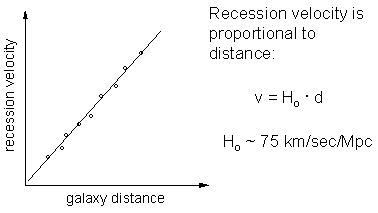Using the Hubble Parameter
The Hubble Relation tells us the further a galaxy was from us, the faster it was moving away from us.
In astronomy, distances are extremely important. We need them to determine accurate, absolute scales of
astronomical objects (like luminosity, diameter, etc). How might the Hubble Relation help us in obtaining
distances?


Consider the two diagrams. We have a directly measurable quantity (the velocity as measured from
Doppler Shifts) which is related to distance! If we can determine the slope of this line
accurately (the slope IS the Hubble Constant), we can use it to easily measure
the distance to far away objects in the universe.
Other methods for obtaining Galaxy Distances
- Angular Size The further away the galaxy, the smaller it would appear on the sky (angular
size). However, this is not very accurate because galaxies are not all of the same intrinsic size!
- Rotational Speed If a spiral galaxy is rotating quickly, it must be very massive. Since all
galaxies have rather similar Mass to Light ratios. Rotational speed gives us
an idea on the Luminosity, and comparing that with the Flux on Earth, gives us an estimate for
the galaxy's distance. This is only broadly accurate for a large number of galaxies.
- Velocity Dispersion This is used to estimate the masses of Elliptical Galaxies, which
relates to Luminosity, and thus allows us to estimate distances, just like using rotational speeds
of spiral galaxies (as noted above).

